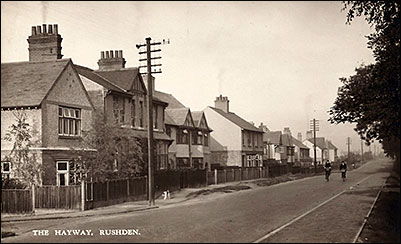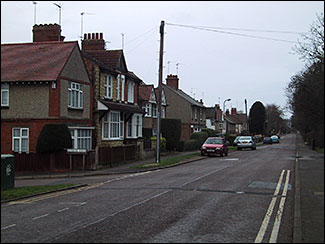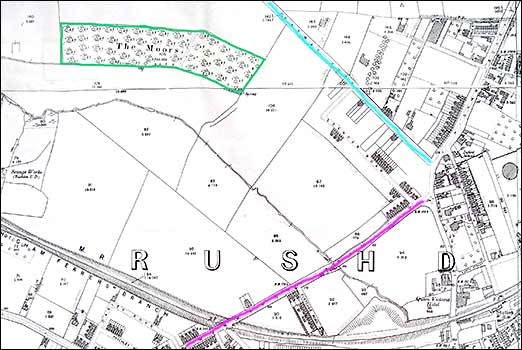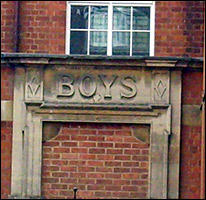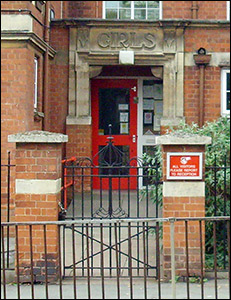The 'Hayway' runs in a straight line and stretches for just over half a mile on the northern side of Rushden town centre connecting Higham Road with Northampton Road.
There are two schools along its length, the former infant school for boys and girls, and the present day Rushden Academy a former comprehensive, catering for both sexes.
The housing ranges from Victorian terraced cottages to large mansions and several 'new build' detached homes.
In old Kimbolton Road (now renamed Northampton Road), at the north end of Hayway, stands Ferrers Mere built for John White, and Moorlands.
Place's of interest......
| 1. The Romans |
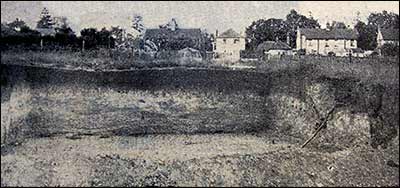 |
Evidence of a settlement at Rushden during the Roman occupation was found in the excavation for a new school near Hayway. Human bones were dug up where the branch leans against the earth on the right, and holes dug centuries ago can be traced on the wall of earth.
|
1953 - Several centuries are added to the known age of Rushden – and, for that matter, Higham Ferrers – as a result of the discovery last April of human remains on land between Spencer Road and Hayway.
It was in mid-April that workmen excavating on the site of Rushden’s new school for girls found a small cluster of brown bones about thirty inches below the surface. The bones were handed to the police and then, when their great age became apparent, passed into the care of Mr. A. Norman Groome, the Rushden solicitor and archaeologist.
Shortly afterwards some small pieces of pottery and an old coin were found at the same spot. Mr. Groome sent all the finds to London for expert examination and has now received a report which indicates that there were permanent settlements in this neighbourhood during the Roman occupation.
|
|
2. The Moors
|
|
|
1900 Map
The Moors marked in green.
Hayway marked blue.
Washbrook Road marked pink.
The railway across the bottom.
|
|
Wellingborough & Kettering News, August 27th, 1881, transcribed by Kay Collins
CUB HUNTING —Cub hunting was commenced by the Oakley pack on Monday last, the bitches being taken to Henwick where the first blood of the season was tasted. From thence they were taken to Rushden Moors, at which place the pups were no sooner in than it was evident some sport was in store as they gave tongue, and after some good brushes up and down the cover a fine cub was killed inside the cover. They were again put in and several more were soon on the move, but the master wished every opportunity to be given for them to go away and after some had left up the clover field, and the cover had had a good storming up, the hounds were called out.
|
Wellingborough News, 14th November 1890, transcribed by Kay Collins
THE OAKLEY HOUNDS met at Rushden for the first time this season on Tuesday. There was not a large number of horsemen present, but this was counter-balanced by the hundreds of footmen who put in an appearance. From the "Oakley" a move was made to the Moors, where foxes proved plentiful, and a redskin soon broke cover, and made off in the direction of Knuston spinneys.
|
|
3. The Market Gardens
|
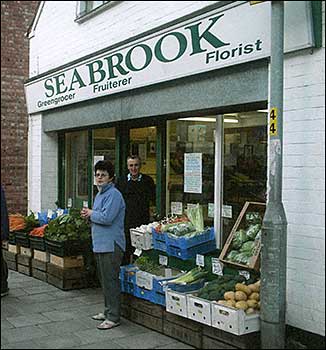 |
|
David and his wife Lesley outside the shop at
103 High Street, shortly before it closed in 2008.
|
There were three market gardens situated in the Hayway, two at the north/western end, and one at south/east/central end owned by the Seabrook family. The garden included greeenhouses and facilities for the upkeep of the business. It stretched from Spencer Road up to and including the school running along the rear of houses in the Hayway. They used to supply much of the fruit and vegetables to shops in Rushden.
In 1983 David Seabrook took over this greengrocery shop in the High Street in Rushden.
The land was eventually sold c1953 to accomodate the building of extensions for the girls school.
|
| 4. The Schools. |
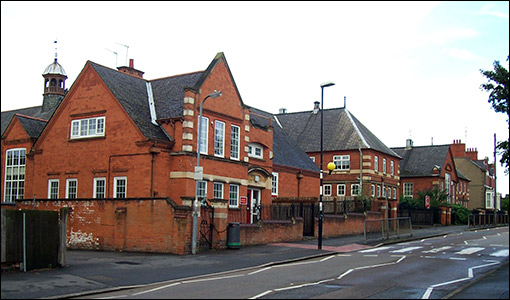 |
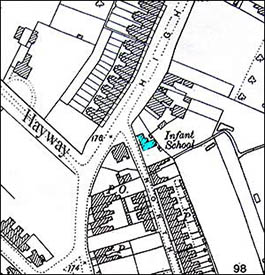 |
|
The Hayway Schools built in 1903
|
The Mission Hall shown in blue 1900
The open area below Hayway (bottom left corner) where the new schools were built
|
A new school was established in 1893 in North Street to take 77 pupils, with Ellan Jones as headmistress.
By 1900 there was need for more places and the Hayway Infant School (above left) was built by W. Packwood. The school was opened in 1903 and a boys' school and a girls' school were then erected next to this building.
In 1925 the buildings were used as the new Intermediate School taking pupils from 11 years old to 14.
In 1949 the boys moved to a new school in Tennyson Road, and the girls remained here, the school being renamed North End.
|
| The Buildings are now used as Rowan Gate Primary School for special needs education. They have retained the original features. The carved stone lintels over the three doors - Entrance - Girls - Boys - all survive, but the old boys department doorway is now bricked-up. |
|
| Rushden Comprehensive School. |
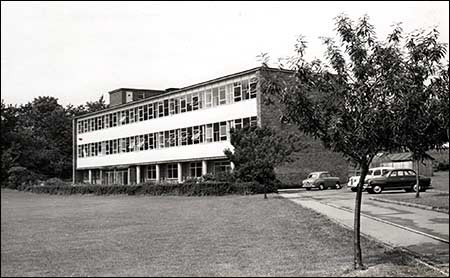 |
In 1944 an Education Act was proposed by the then Minister of Education, Mr Rab Butler. The Act came in around 1947, raising the leaving age by a year, three classrooms were taken over at the Boot and Shoe School in Victoria Road to house the extra year boys and girls from Rushden and Higham Ferrers, and Miss Muriel Boys was transferred from North End Intermediate School to teach there. In 1948, headmaster Mr Ron Lawrence applied for and was given the position of Head of Alfred Street School and Miss Boys took over as the principal.
The Comprehensive School Built in 1953
|
|
5. The Memorial Clinic.
|
Just down and across the Hayway is a house built around 1890-1895 for the Claridge family. Master Ebenezer Claridge spent the early years of his life living in Rushden in Fern Cottage possibly situated in Lion Terrace in the High Street. At the beginning of his working life he was a clicker in a shoe factory working his way up to being a leather manufacturer and subsequently employing 15 men, 4 boys and 20 girls. He married Miss Mary Clarke at St Mary’s Church Rushden on 17th May 1864 and by 1873 they had moved home to North Villa, North Street. This later became The Westward Hotel.
The house in Hayway was eventually gifted to the town by Oliver Claridge. It was to become Rushden Home Hospital and was opened in January 1950 to serve the ever growing population of Rushden and the surrounding villages. It was called the Memorial Clinic when a large memorial plaque was erected in the hallway to commemorate those lost in WWII.
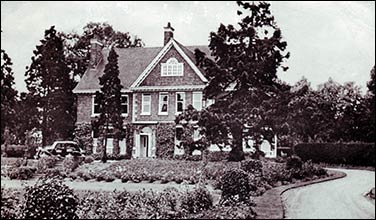 |
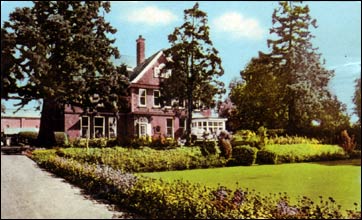 |
|
In the 1940s
|
In the mid 1960s
|
The building is currently empty and awaiting development, (November 2018) with the original clinic tranferred to Nene Park, Irthlingborough, on the northern side of the A45/A6 Chowns Mill roundabaout.
|
| 6. Notable Houses. |
|
Masons Close
This was the home of solicitor, George Stewart Mason, and his wife Edith. George was the son of Stewart Mason, farmer and he married Edith (nee Randall) - daughter of E B Randall, a boot manufacturer at Higham Ferrers, in 1893. Their son Randall Stewart Mason was killed in WWI. George was also clerk to the Urban Council from 1891 until 1934. He died in 1937, and Edith died in 1944.
The Orme family were the next residents of this fine villa in Hayway.........
|
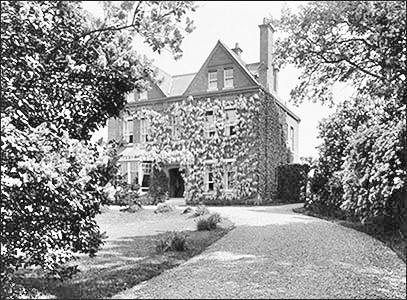 |
|
Hazelwood House
Abraham Groome started shoemaking in 1850 at Higham Ferrers. In 1890 the company, now Abraham Groome & Sons, built a new one-floor system factory in Oak Street. Their son George Henry Groome (b1856) and Sarah his wife (b1863) lived at Hazelwood from about 1897 until 1936.
The house, with about 4½ acres of land, was near the factory, and had a long driveway off Hayway.
|
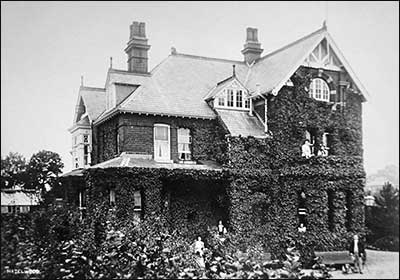 |
|
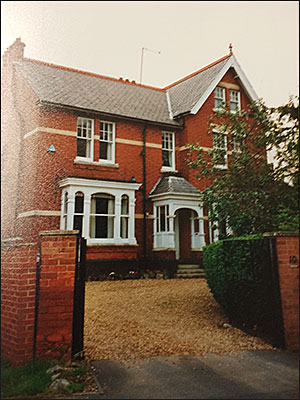 |
Moorland House
Built in 1897 for Mr William Benjamin Sanders and his wife Mary Ann, and their growing family. In 1901 they had nine children.
When the family buisness expanded in 1908, a new factory was built close by in Spencer Road.
|
|
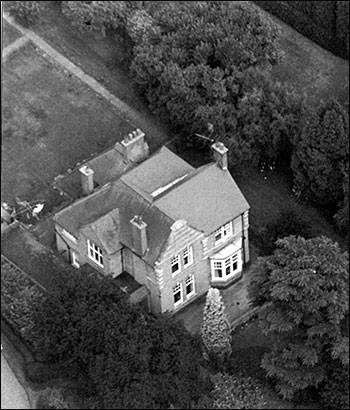 |
Built for architect Herbert Adnitt c1900
W A Groome lived here 1914-1930s.
Asholme in Hayway c1980s
|
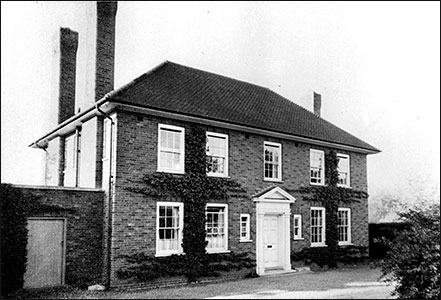 |
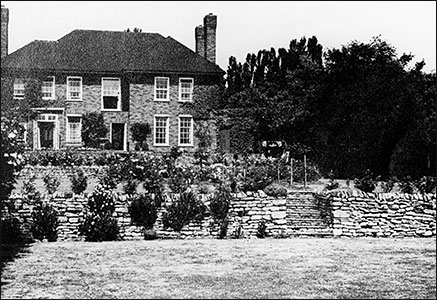 |
|
|
Rear view.
|
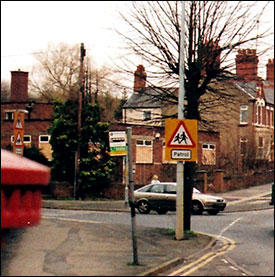 |
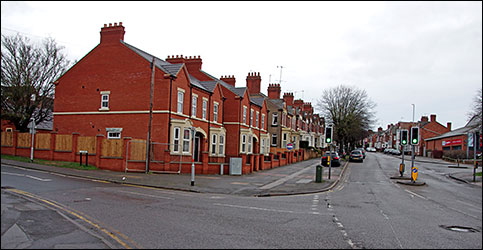 |
Offices at the corner of Higham Road and Hayway. Built 1957 demolished 2017
Courtesy of Mervyn Wood, 2006 |
4 houses on Higham Road corner of Hayway, where the Boot and Shoe Union was originally. The building then became a print works for a time, and then stood derelict for many years. It is good to see housing now on the site.
Picture from Mervyn Wood |
|
